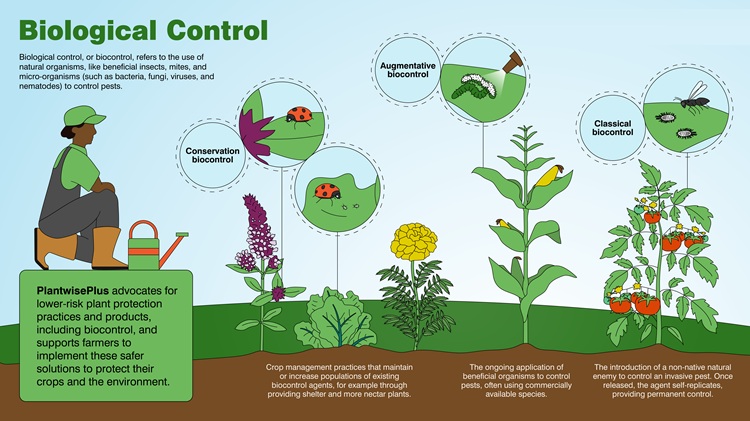(Preliminary Examination: Science and Technology)
(Mains Examination, General Studies Paper-3: Biotechnology; Science and Technology – Development and Applications) |
Context
The tapioca (cassava) crop in South India was once nearly destroyed, but biological control techniques employed by scientists at the Indian Council of Agricultural Research (ICAR) revived it. Parasitic wasps released two years ago have rid the threatened crop of pests and restored farmers' incomes.

About the Tapioca Crop
- Tapioca, also known as 'cassava' or 'sago', is a root crop grown on approximately 1.73 lakh hectares in India.
- Tamil Nadu and Kerala together contribute more than 90% of the country's tapioca production.
- Its yield in India is 35 tonnes per hectare, much higher than the global average (10.76 tonnes per hectare).
- Tapioca is not only a food source, but also used to make starch, sago, and other value-added products, which India exports for approximately Rs 20 crore annually.
- It is an important cash crop and livelihood source for small farmers.
Biological control refers to:
- Biological control is a method of using other organisms, such as natural predators, parasites, or pathogens, to control pests, weeds, or diseases.
- It is a cost-effective and environmentally friendly alternative to traditional chemical pesticides.
- It involves the use of biological products that have little or no negative impact on human health and the environment.
Crop Protection Experiments Using Biological Control
- Mealybug Outbreak: The outbreak began in 2020, affecting 1.43 lakh hectares of tapioca crops and reducing yields by up to 70%.
- Biological Control: ICAR-NBAIR adopted biological control instead of chemical pesticides, releasing the parasitic wasp Anagyrus lopezi.
- Initiative Launch: The first field release began in March 2022 with 300 farmers in Yethapur, Salem, followed by releases in over 500 farms across Tamil Nadu, Kerala, and Puducherry.
- Results: By 2023-24, yields in the affected districts were restored to 35 tonnes per hectare, and the mealybug was naturally controlled.
- Propaganda: NBAIR distributed over 2 lakh wasps, established 3 satellite production centers, and conducted 25 awareness programs and training sessions.
About Parasitic Wasps
Anagyrus lopezi is a small parasitic wasp that specifically targets the cassava mealybug. This wasp lays its eggs inside the mealybug's body, and its larvae destroy the insect from within, thereby naturally reducing the mealybug population. Its characteristics are:
- Native Range: This species is native to South America, where the mealybug also originated. It was imported from the International Institute of Tropical Agriculture (IITA), Benin, West Africa.
- Bio-safety: NBAIR confirmed through studies that this wasp only harms the mealybug, not other crops or beneficial insects.
- Natural Dispersal: After release, the wasp naturally spread over a distance of 30-40 km, effectively controlling the mealybug.
- Benefits: Environmentally friendly, cost-effective, and accessible solution for small farmers.
Conclusion
The use of the parasitic wasp Anagyrus lopezi protected tapioca crops in South India from a mealybug infestation, protecting both farmers' livelihoods and the environment. This demonstrates the power of biological control and offers a model for reducing dependence on chemical pesticides. For long-term success, awareness, research, and policy support must be promoted to ensure India's agriculture remains sustainable and prosperous.



